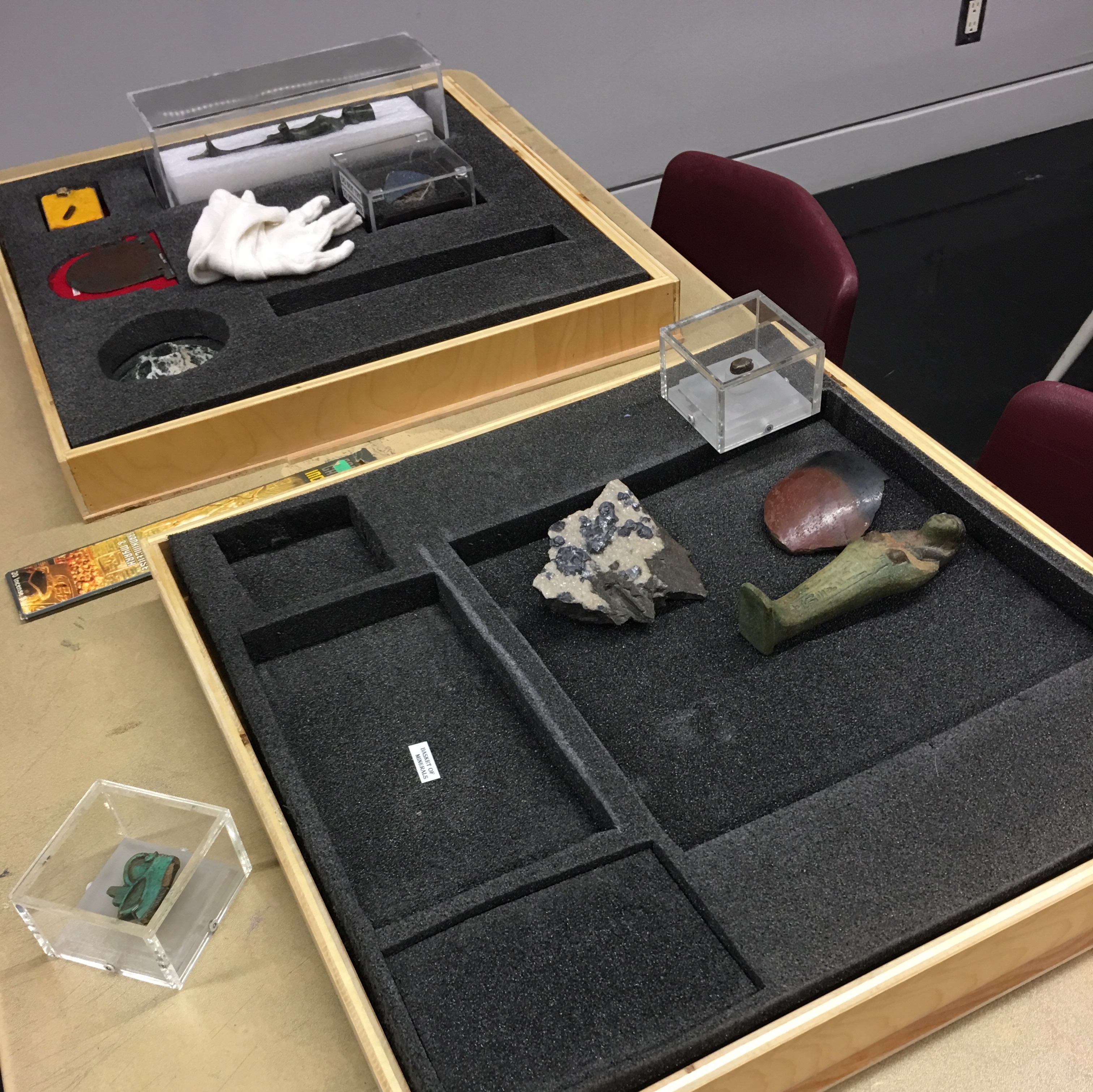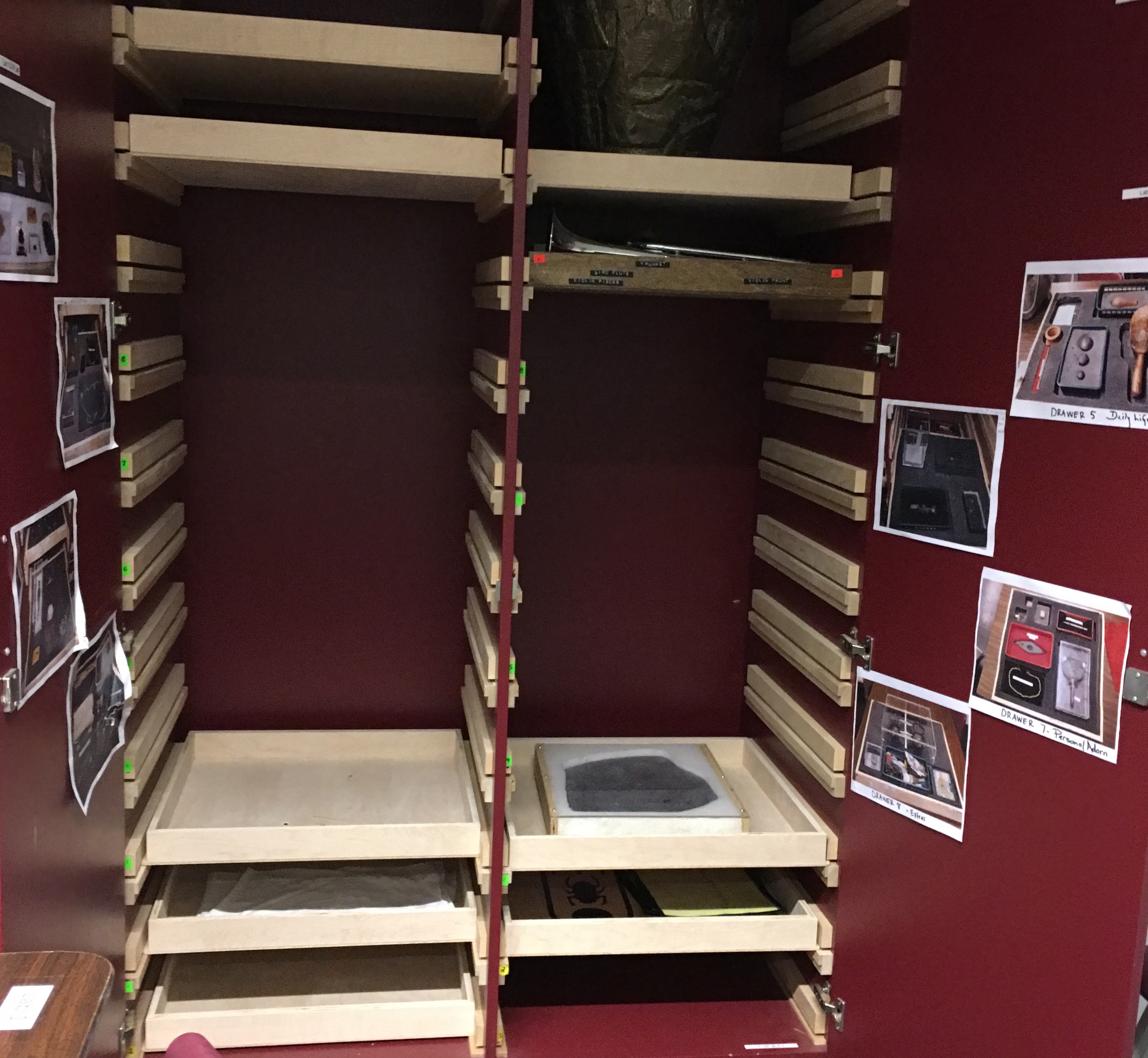- Curated
- Maintained in storage
- Updated in the catalog
- Given an information sheet or researched
The Ancient Egyptian collection currently has 2 classrooms though with the changing curriculums Ancient Egypt is becoming less popular, which means other topics, such as “Genocides and Crimes Against Humanity”, are in demand. What this means is most likely in the future the collection will downsize to one classroom and a more popular collection will overtake a room, creating more work for relocating and updating a tone of catalogs.

Some old Ancient Egyptian trays before I recut them, sans several removed items from not being needed or used. Property of the ROM Learning Dept.
Translation, Intent, and Purpose
What I found most challenging in understanding and learning about the curriculums is the selection process for what and how information gets taught. For example, you have to realize you’re catering to school-aged children so you have to keep in mind several things such as attention span, the complexity of words, and difficulty of concepts.
One of the things I found interesting were Ancient Egyptian “shawabtis”, little funerary figurines. My supervisor told me “shawabti” translates to “slave” but I was interested so I did some searching online and found it can also mean “servant” or “follower”. While I could tangent into a lengthy discussion on problems with translation, I think for museum education the problem with issues like this is deciding which definition is either the best or most relevant. Either way, you’re leaving out information in favor of other information you deem more important. This seems incredibly stressful to me as you have the power to shape the way groups of children view and understand certain things.

A picture I took of a Shawbti figure. Property of the ROM Learning Dept.
Object Selection Depends on Class Size, Age, and Study Level
While you might think objects for a certain collection are all used for every class, you’d be wrong. Classes are organized by tables and each table gets around 4-7 objects depending on class size and age. Additionally, each collection features a range of topics, for example in the grade 7 Canadian collection some themes include: fur trade, daily life, winter, and lumber. If there aren’t enough students to fill all the available tables, a topic gets cut.

A view of one of the storage cabinets in the Ancient Egyptian classroom missing several trays I was working on. Property of the ROM Learning Dept.
A coordinator will have to take this all into account when planning their lesson in addition to personal communication with the school to figure out where they are in the curriculum, what the kids are interested, etc. In my experience, from hearing tones of coordinators complain and fret, last minute changes are extremely common so even planning a lesson in advance does not guarantee that’s the lesson you’ll end up teaching.
Ultimately, I’ve learned that museum education requires a lot of on the spot thinking in addition to tones of planning and researching. I think kids getting to learn with objects first-hand is a fantastic experience but it does add a lot of stress, critical decision making, and work to a lesson.
